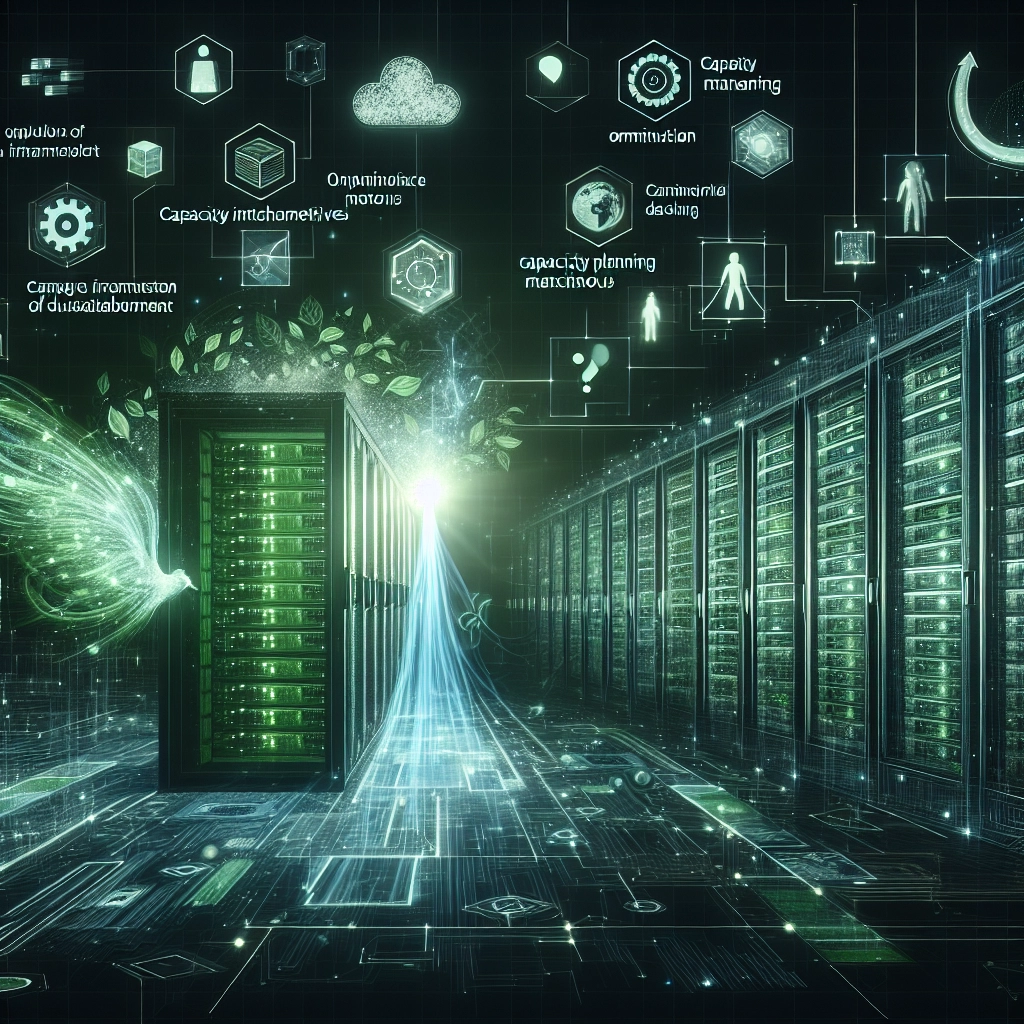Data center infrastructure management (DCIM) is essential in overseeing the many facets of physical data centers. This framework integrates IT management, operations management, facilities management, and automation. The goal of DCIM is to offer comprehensive visibility into power, cooling, space, and asset health, thereby reducing costs and improving reliability.
At its core, DCIM empowers operators with real-time insights into various components including servers, storage devices, networking equipment, and supporting infrastructure like power distribution and cooling systems. This consolidated view enables operators to identify bottlenecks, optimize equipment, and plan for future capacity needs.
Functionality of DCIM
DCIM software automates workflows, maintains audit trails, and assists in the management of physical assets within a data center. Continuous data collection from computers, servers, networking tools, security systems, and environmental sensors helps establish a detailed baseline of the data center’s operational landscape. This allows for both proactive problem prevention and autonomous issue resolution, ensuring optimal performance and efficiency.
Key Components of DCIM
-
Data Collection Tools: DCIM platforms require sensors for continuous monitoring of vital parameters such as power usage, temperature, and humidity.
-
Centralized Management: Data from various sources is aggregated in a central database, which can provide visualizations through dashboards to help managers identify trends and issues.
-
Integration With Other Tools: DCIM can work in tandem with existing systems like configuration databases and building management systems, enabling a more holistic view of data center operations.
Importance of DCIM
As data centers evolve into larger and more complex facilities, the challenges of managing them simultaneously grow in scope and difficulty. Disparate teams might handle various responsibilities, making a unified view of operations harder to achieve. DCIM addresses these challenges by creating a centralized platform that streamlines processes, cuts downtime, and enhances energy efficiency.
Diverse Applications of DCIM
DCIM systems maintain detailed logs of all hardware, including physical locations and interdependencies, aided by real-time data processing and alerting capabilities. This automated approach supports a variety of scenarios:
-
Real-Time Visualization: Operators can utilize heat maps and interactive graphs to monitor conditions and address issues promptly.
-
Asset Management: They can track physical resources and manage specifications more effectively, aiding in timely upgrades or decommissions.
-
Capacity Planning: This includes the ability to run simulations based on current and projected needs, optimizing future investments and resource allocations.
-
Workflow Management: Automating routine tasks helps reduce errors and frees up personnel for more critical functions.
-
Energy Management: Continuous monitoring of energy consumption fosters sustainable practices and helps lower operational costs.
-
Security Enhancements: DCIM can also bolster security through threat detection and automated reporting on performance metrics.
Benefits of Implementing DCIM
Utilizing DCIM can yield significant benefits, including:
-
Cost Reductions: By identifying inefficiencies in power and resource allocations, DCIM systems facilitate energy-saving measures and extend equipment life.
-
Increased Uptime: Predictive maintenance capabilities allow teams to foresee potential failures and address them before they result in downtime.
-
Enhanced Capacity Planning: Historical data analysis enables informed scaling, minimizing waste and adapting to fluctuating demands.
-
Central Management: Integration of disparate systems into a cohesive management platform simplifies oversight and improves compliance.
Challenges to Consider
Despite its advantages, organizations must assess several challenges before adopting DCIM:
-
Security Risks: Open connections among systems can create vulnerability points that need to be managed with robust security protocols.
-
Integration Complexity: Connecting diverse systems, especially older technology, can be costly and might require significant modifications.
-
Skill Gaps: Staff must be properly trained to utilize DCIM tools efficiently, ensuring that the potential value isn’t lost.
Conclusion
In this era of increasingly sophisticated and resource-heavy data demands, DCIM serves as a vital resource for enhancing operational efficiency. While challenges exist, careful planning and execution can lead to improved capability, decreased costs, and a more sustainable infrastructure.
DCIM Vendors to Watch
Several leading companies provide innovative DCIM solutions, helping organizations effectively manage their data centers:
- Device42: Known for asset discovery and network mapping.
- Schneider Electric: Offers comprehensive monitoring solutions.
- Sunbird Software: Features user-friendly software with advanced integration options.
- Eaton: Provides intuitive monitoring and power management.
- Nlyte: Specializes in versatile asset and energy optimization tools.
The strategic implementation of DCIM can propel enterprises into an agile and responsive future, particularly as demands from AI and other technologies continue to grow.
Welcome to DediRock, your trusted partner in high-performance hosting solutions. At DediRock, we specialize in providing dedicated servers, VPS hosting, and cloud services tailored to meet the unique needs of businesses and individuals alike. Our mission is to deliver reliable, scalable, and secure hosting solutions that empower our clients to achieve their digital goals. With a commitment to exceptional customer support, cutting-edge technology, and robust infrastructure, DediRock stands out as a leader in the hosting industry. Join us and experience the difference that dedicated service and unwavering reliability can make for your online presence. Launch our website.

